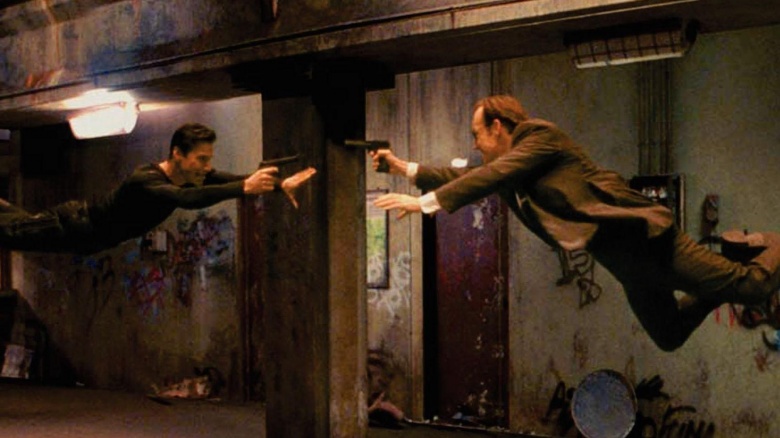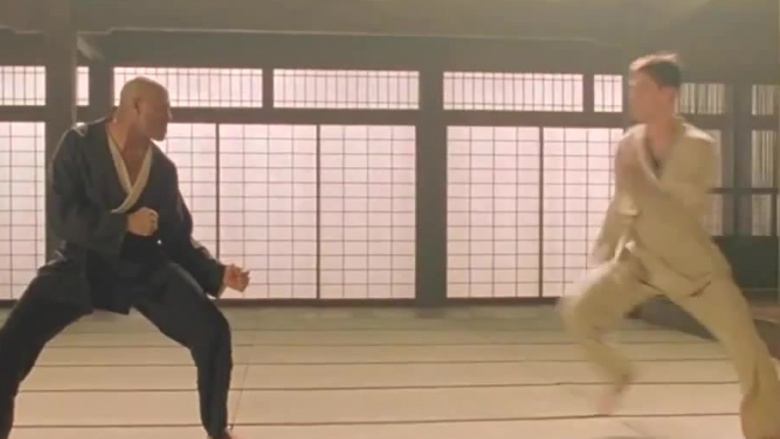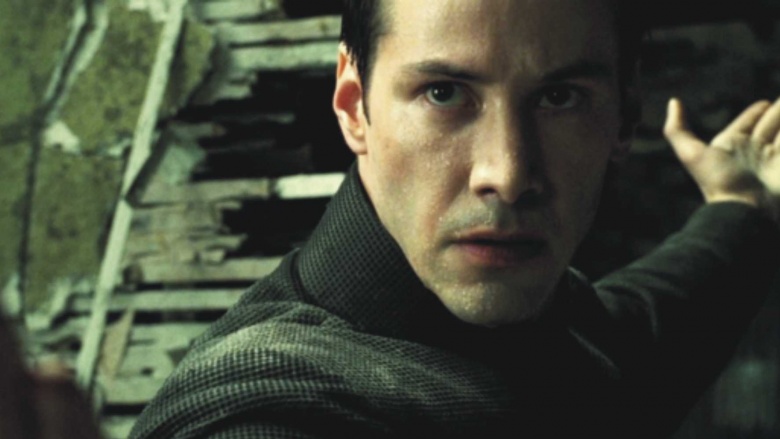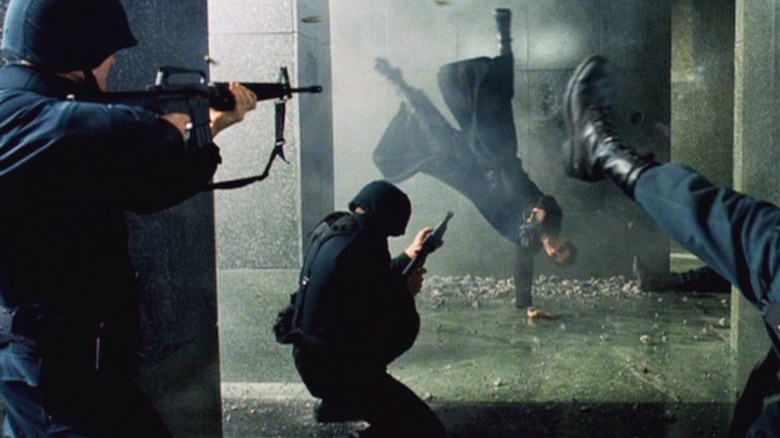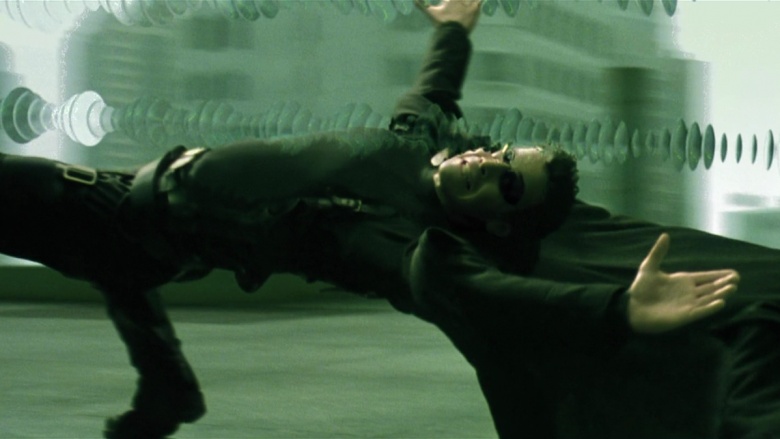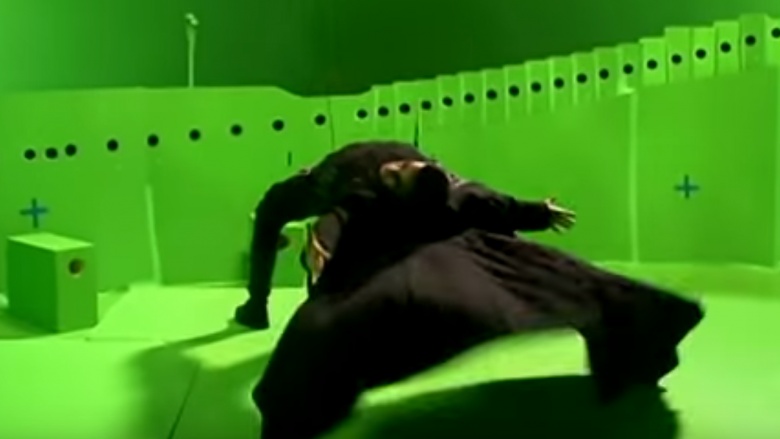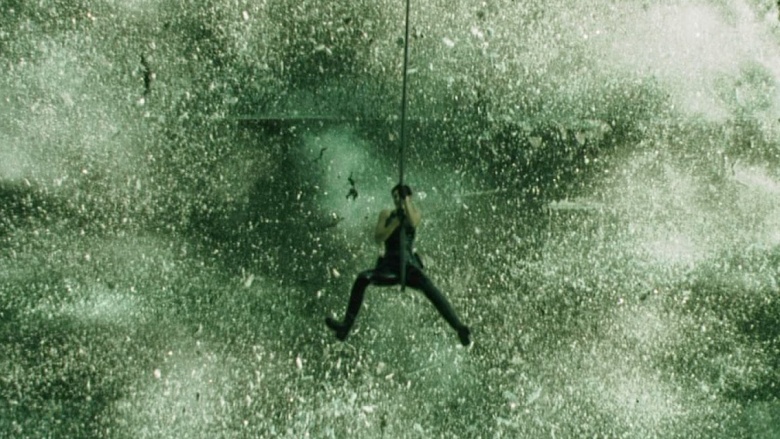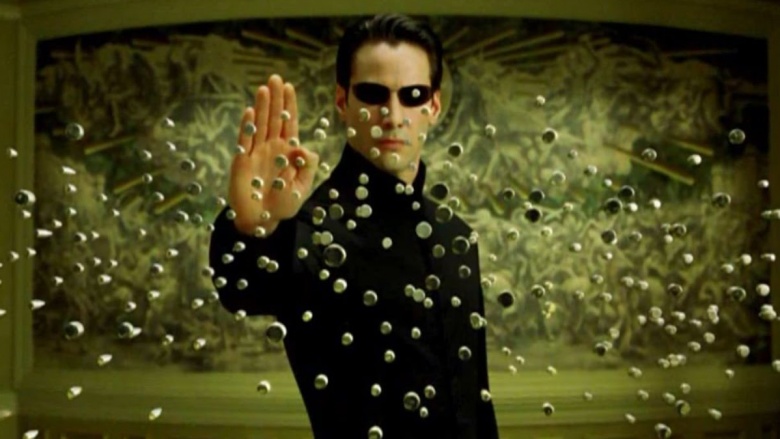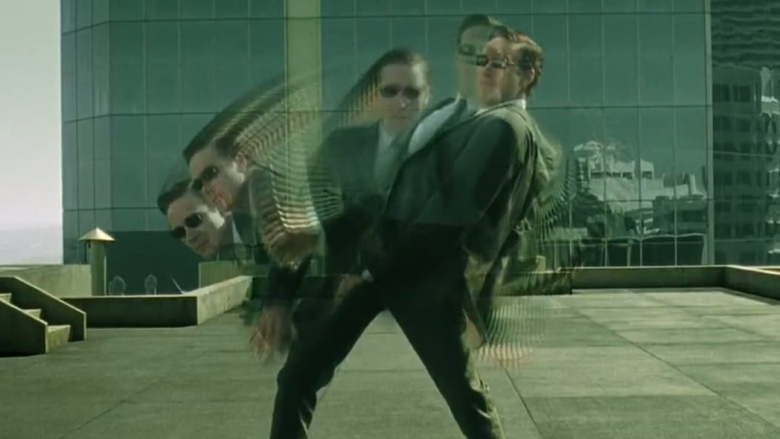How The Matrix Pulled Off That Legendary Fight Scene
It's been almost two decades since the Wachowskis delivered The Matrix to theaters, stunning audiences with its visual dynamism while blowing their minds with a crazy futuristic concept that actually almost seemed plausible. (In retrospect, its foundational philosophy was essentially Plato's "Allegory of the Cave" for the digital age, but still. It was heavy.)
What was most unforgettable about the film—apart from that head-scratcher of a metaphor about the spoon, of course—was the sheer badassery of its fight scenes. Never before had classic martial arts been matched with such incredible visual effects, and sheer existentialism, all in the same space. It was nothing short of an exhilarating entertainment experience, and even after all these years, the film's fight scene feats still hold up. Here's a look at how they pulled it off.
The Wachowskis had some key inspiration
When envisioning the fight scenes that might fit into the multi-dimensional universe they'd created with this story, the Wachowskis were heavily influenced by Hong Kong's action film repertoire. "We have always wanted to bring Hong Kong wire stunt and fight sensibilities into our Western story ideas," they told Kung Fu Magazine. "This was the perfect opportunity." The pair were particularly inspired by Yuen Wo Ping, a stunt and wirework specialist who counted producer Joel Silver among his fans. With his blessing, the Wachowskis and executive producer Barrie Osborne recruited Ping to help guide the actors in using wires for stunts that would allow their actors to suspend mid-air, as in Neo (Keanu Reeves) and Agent Smith's gravity-defying subway shootout.
The actors had to prepare with months of kung fu training
In order to secure Ping's involvement, the cast had to train in kung fu and show commitment to the discipline. This meant the actors spent four months in a demanding martial arts training course before they ever stepped foot onto the sets. "It was really intense, but it was a lot of fun," Laurence Fishburne said in a 1999 interview. "I believe we were the first western actors to work in this particular style, and I feel tremendously grateful to have had that opportunity."
Considering the thesps were also required to do actual homework and read several philosophical treatises, the preparative intensity for this picture was quite high—which might help explain why, as seen in behind-the-scenes videos from the film's production, the actors were able to do a lot of their own stunt work.
Keanu Reeves also borrowed another kung fu legend's move
Reeves paid tribute to Bruce Lee's cinematic sparring style in several moments throughout the film. In one, Neo rubbed his nose with his thumb, adopting the icon's signature gesture, and in another, he left his leg extended mid-air after a side kick, just as Lee did in Enter the Dragon. Also the subject of an unlikely homage: Wile E. Coyote. The Wachowskis called back to the character's ability to escape a long fall unscathed during the moment when Neo first tries his hand (er, feet) at jumping from building to building in the simulation.
The lobby scene was done sans CGI
Although The Matrix earned a mountain of awards for its computer graphic achievements, one of the most distinct moments from the movie was done without any digital effects. The ultra-violent lobby shootout scene with Neo and Trinity (Carrie Anne Moss) during the first leg of Morpheus' rescue featured real explosions to complement its brief-but-brutal massacre of the guard squad blocking the elevator.
The next leg of the battle, however, featured the groundbreaking "bullet time" visual effects achievement
Visual artist John Gaeta, impressed with the Wachowskis' script, joined forces with the effects team at Manex VFX after introducing what would become known as "bullet time," a revolutionary camera process that allowed a shot to appear as though the camera was moving at normal speed while everything in frame is moving in slow motion. It was named for the scene in which time seems to slow down for Neo as he dodges a series of bullets, showing his adroitness of motion with a stunningly unique (for the time) visual treat.
In a nutshell, this slick technique involved setting up a series of still-frame cameras which were triggered simultaneously to "create slow-motion events that 'virtual cameras' could move around." Gaeta, who shares an Academy Award with the Manex team for their work on The Matrix, was originally inspired by a similar method used by Japanese filmmaker Otomo Katsuhiro's Akira.
A green screen was used for a lot of the background filler
Although several outdoor bullet-heavy battles were shot on an actual rooftop, the more effects-heavy moments were shot on a green screen with a 3D model artist brought in to replicate the settings. The sequels, The Matrix Reloaded and The Matrix Revolutions, would each utilize an enhanced method of CGI backgrounding using real photographs of buildings for optimal texture.
The helicopter crash scene was as elaborate as you'd think, too
When Neo and Trinity hijack a helicopter to gain access to the room where Morpheus is being held, the scene was filled with plenty of real rain (can you even imagine the actors' prune toes?) but also a good deal of computer-generated imaging. Not only was the "bullet time" effect used to show Morpheus being shot in the leg, but the (model-sized for shooting purposes) chopper was ditched and eventually crashed into the side of building, causing a digitally created ripple effect that was quickly followed by a wave of real, well-timed circular explosions filmed with stunt glass.
There was also a purposeful greenish hue to the whole thing
The idea was that, in the spirit of the narrative, the viewer is watching the events unfold through a computer screen, unable to see the "greenrain" code stream that flows beneath to create the images. Spooky, right?
And let's not forget the sound effects and other technical achievements here
Zach Staenberg took home an Oscar for his work editing this film (just imagine trying to come through all of those frames in a single scene alone), and the sound and sound effects teams also scored some big prizes for their work. Like the VFX team, the sound squad also utilized a litany of clever resources, from orchestral to choral to synthetic tones, to reflect the film's complex relationship between technology and mankind.

